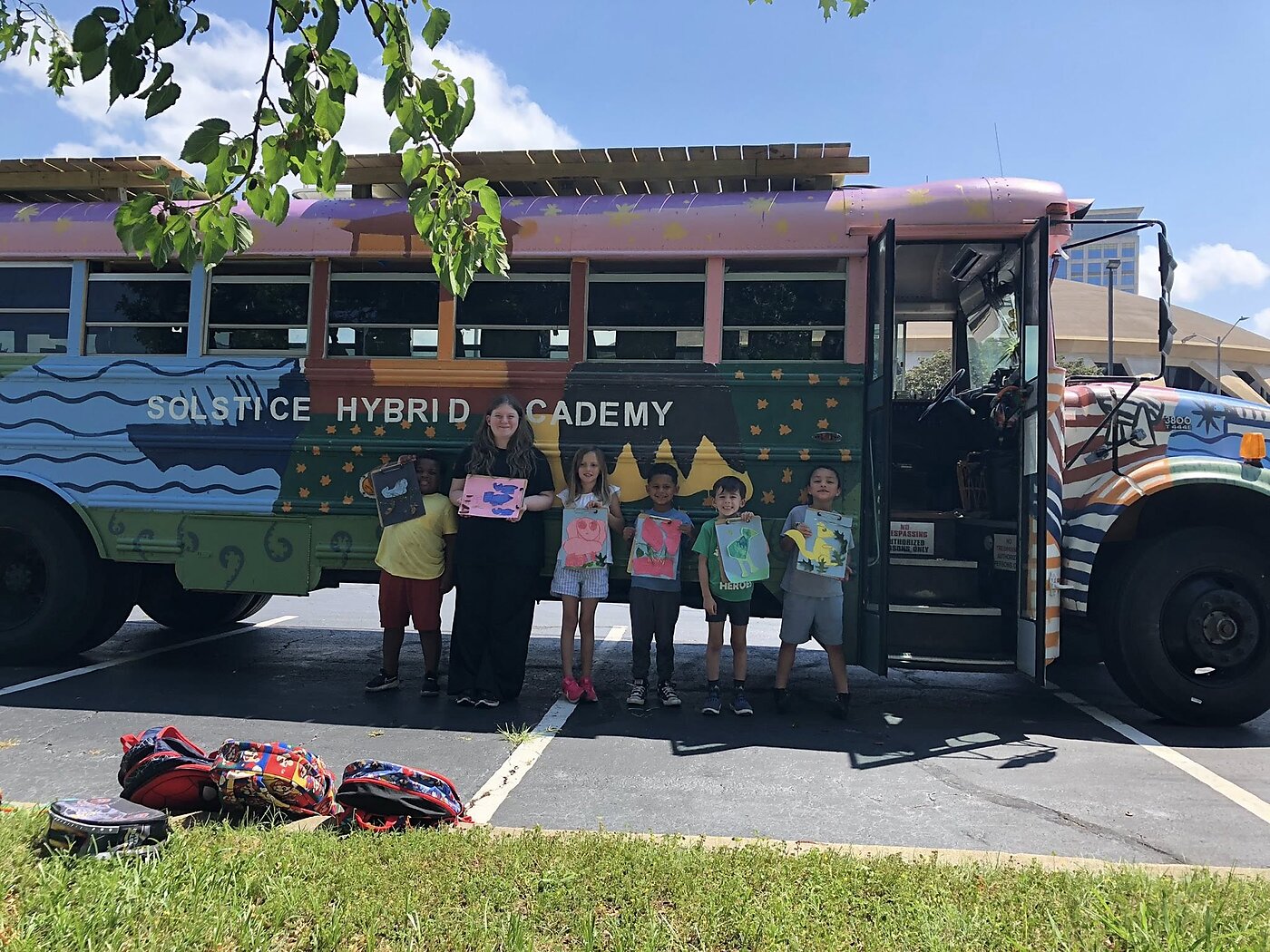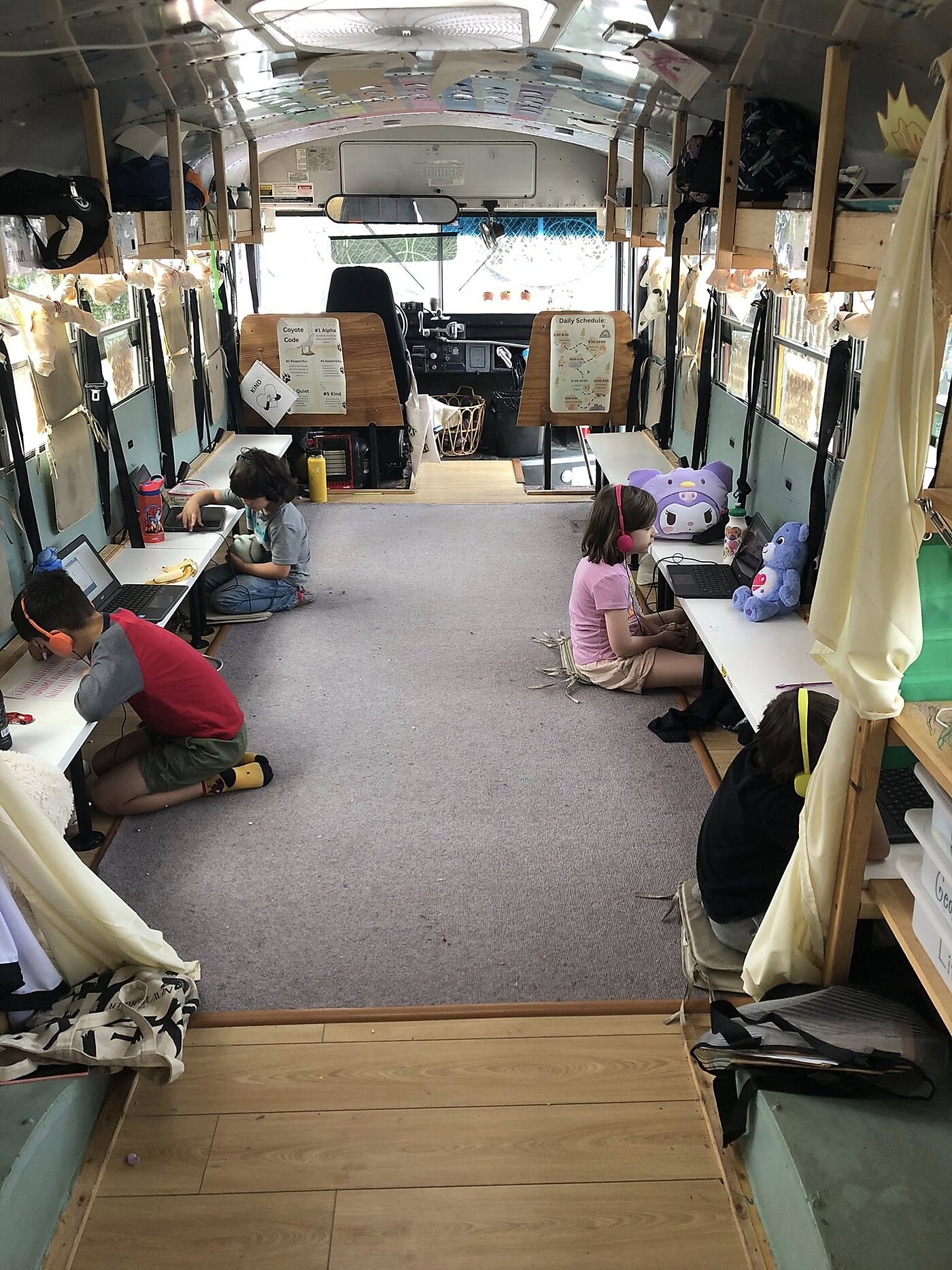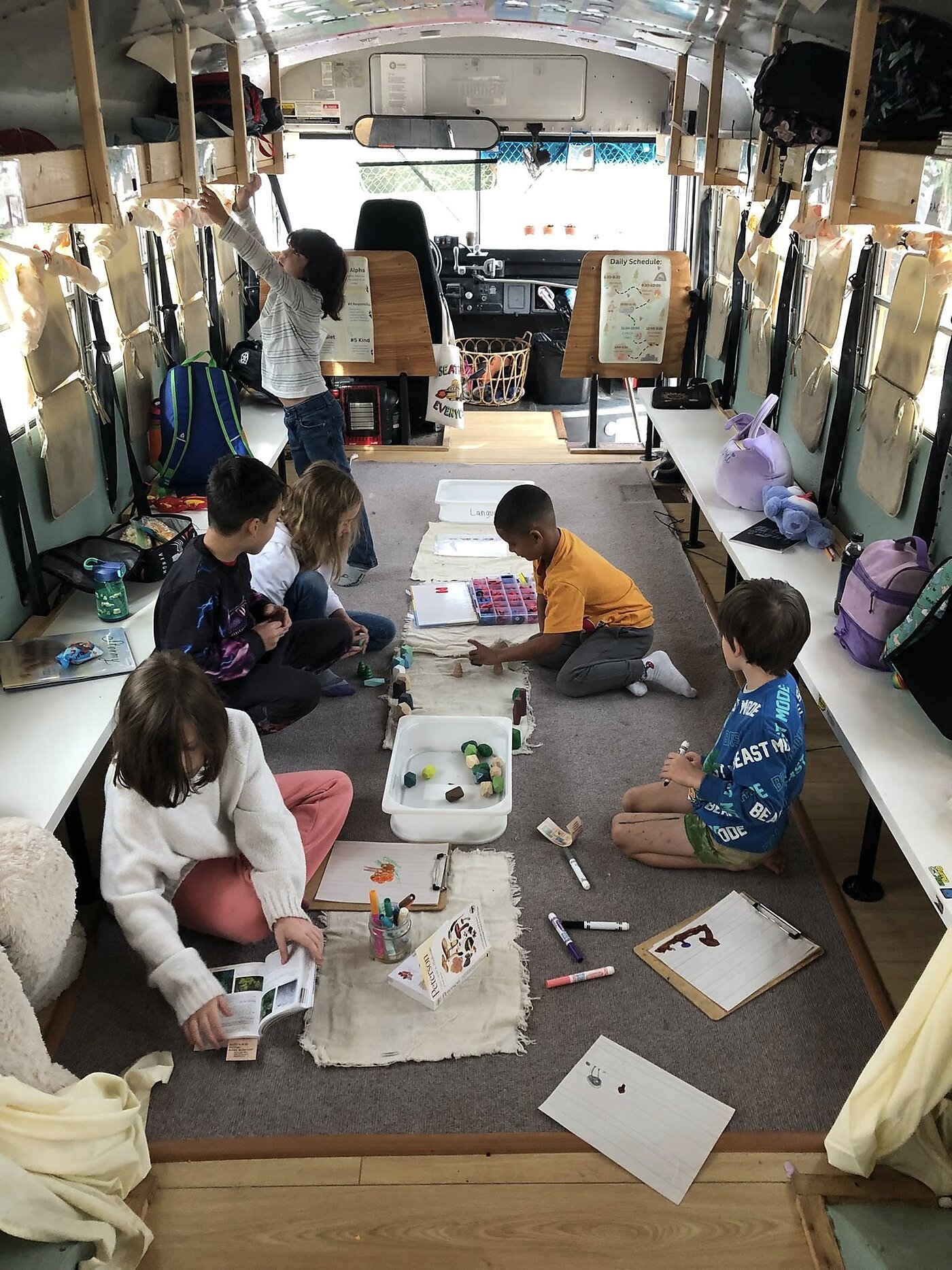Colleen Hroncich
A microschool in a converted bus? Depending on your perspective, it may sound crazy, or it may sound amazing. To former public school teacher Sarah Harrington, who was growing frustrated by the limitations in the school system, it seemed like the perfect solution.
“I got my degree in art, and after trying to become a professional artist for a couple of years, I decided to try teaching,” she explains. Sarah subbed for a couple of years and found out she loved it. “I decided to go back to school to get my license for teaching. I got my full-time teaching gig and taught elementary art for eight years.”
During COVID-19, Sarah became deeply interested in mental and physical well-being. “Because I was an art teacher, I tried to really enforce the fact that a lot of artists make art because they have something they need to say and they feel better when they express that,” she says. “Another thing that I loved about art was how it connected to our whole world. And so that was often a big thing. I always incorporated science or history or math and tried to show students how it connected.”
But no matter how much time and energy she put into trying to make a difference and make things better, the limitations in the system were too much to overcome. She spent too little time with her students to make the impact she wanted to make. When she wasn’t able to get her son into the pre‑K program where she taught, it was the last straw.
Sarah started her microschool journey in September 2023, although she didn’t know it was a microschool at that point. She wanted to homeschool her son because she wanted to teach him a certain way, but she also wanted to offer that experience to other families. Initially, she thought she’d open a full-time, low-cost school that would be accessible to families like hers. After learning more about homeschooling, she decided a hybrid program that allowed parents to choose full- or part-time options made the most sense.
“I knew that I wanted to do field trips,” she recalls. During COVID-19, she homeschooled her niece and nephew using the packets the school sent home. They completed the work in the morning and went on field trips in the afternoon. She wanted to use that model in her microschool. “Let’s get the work done. Let’s learn the strategies and techniques and then apply them to a place that will reinforce and make those connections.”
As she worked through her vision for her microschool, she thought about the “skoolie” her husband converted before they were married. “It just made sense to me. It sounds crazy, but I was like, ‘I want to get a bus. And I want to convert it into a classroom so I can take my students on field trips every day,’” she says. “My husband thought I was crazy. My family thought I was crazy. My friends were terrified, ‘You’re going to leave this reliable job that has retirement and insurance and go on this crazy adventure?’” She was undeterred and opened Solstice Hybrid Academy in Norfolk, Virginia, in August 2024, with support from KaiPod.
Sarah parks the bus at a business she and her husband own, so the pickup and drop-off location is consistent for families. When students arrive in the morning, they do an hour of Montessori-type activities and then go for a walk. After a snack, the students start their independent work using whichever computer-based learning platform their parents have chosen. During that time, Sarah and her aide work one-on-one with the students for individual support.
Students can attend full-time, which is five days a week; part-time, which is one to four full days; half days, which means afternoons one to five days a week; or for enrichment, which involves meeting at the field trip location on the days they’ve chosen.
The field trips typically include project-based learning, which Sarah thinks makes sense given that’s what art really is. “You have a goal—something that you are going to create. And here are the tools and techniques and things that you need to know in order to make that,” she explains. “A project to me also can be a theatrical performance or learning a song. You are applying all this knowledge that is being taught to you into a summative performance or object.”
One of Sarah’s favorite projects involved a massive wind farm that is going to be installed in the ocean just off the coast from where they live. She took the kids to the beach and gave them each a map so they could map out where the windmills would be located using the actual measurements. Then they talked about harvesting energy, and specifically wind energy. They also discussed how most windmills are not recyclable, but that this particular company developed blades that could be recycled to make new blades. Afterwards, the kids got to design their own kites and fly them on the beach so they could witness wind power for themselves.
So far, Sarah is very happy with her decision to create a microschool. “I love that I’m the everything teacher now and not just the art teacher,” she says. Now, when they’re working on something during their lessons and then see it on their field trips, she can point it out to them. “It’s so great to be able to be with them all day and help them find those connections.” She also loves being able to focus on the individual needs of her students, especially the ones who have challenges that would have made them struggle in a conventional school. “Being in the small environment is really serving them, and they’re really thriving. And I’m just glad that they’re here and they’re not just in a system.”




